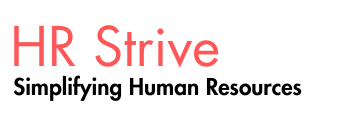Nonfinancial Performance Measures
Nonfinancial measures delve into organizational shifts not directly expressed in monetary terms, yet whose impacts can be quantified to reveal their financial implications. These crucial indicators may encompass:
Market Share: An indicator of competitive prowess.
Social Responsibility Achievements: Demonstrating commitment to broader societal well-being.
Efficiency: Reflecting the effective utilization of cutting-edge technology and streamlined processes.
Activity Ratios: Metrics assessing how efficiently resources are deployed to generate profit. Examples include inventory turnover, average inventory age, average collection and payment periods, and asset turnover.
Employee Retention and Job Satisfaction: Gauging workforce stability and morale.
Employee Engagement: Measuring the level of commitment and involvement employees have with their work and the organization.
Market Position: This broad category can include several key factors:
Reputation among investors, consumers, governments, and political entities.
Consumer brand awareness.
A recognizable employer brand, which is instrumental in recruiting and hiring.
A reputation for quality, robust customer relations, and innovation.
A SWOT analysis (strengths, weaknesses, opportunities, threats) is invaluable for pinpointing which of these measures (or others not listed) are most pertinent to an organization's strategic goals. It also highlights areas that could benefit from additional resources to achieve objectives or capitalize on identified opportunities.
Such an analysis can significantly influence HR strategy. For instance, if an organization's brand recognition is deemed insufficient to support expansion, a strategic decision might be made to hire more brand ambassadors. This necessitates adjustments to hiring practices and potentially changes to business travel policies and budgets. Similarly, if an organization decides to expand its market or operations internationally, HR must integrate new legal and regulatory considerations into its workforce management plans.
The Sales Pipeline
The sales pipeline visually represents an organization's entire sales process. By dissecting the sales journey into a visual sequence of smaller components, the process becomes more manageable and trackable. The data gleaned from the pipeline assists managers in forecasting revenue, projecting cash flow, and identifying any bottlenecks impeding the sales flow.
There isn't a singular approach to constructing or presenting a sales pipeline. Depending on an organization's preferences and standard operating procedures, pipelines can vary in their level of detail. Nevertheless, several common components are essential for all effective pipelines:
Identify Leads: Through campaigns, public relations efforts, and other promotional activities, potential customers become aware of the organization and its offerings. This stage is frequently termed "prospecting."
Gather Information: Thoroughly investigate prospective customers to confirm their viability as leads. This involves assessing if their needs can be met, if they possess the financial capacity, and if they represent a legitimate entity.
Create Proposal: Once a lead is verified as legitimate, a comprehensive proposal is drafted. This document details precisely how the product or service addresses their needs or requirements, covering aspects like costs, benefits, process, and pricing.
Negotiate: Upon receiving the proposal, a prospective buyer might present a counterproposal. Occasionally, they may request a demonstration to confirm the product or service genuinely fulfills their needs. Any counteroffer warrants meticulous examination to ensure its financial prudence.
Close Sale: After mutually agreeable terms are reached, the final details are ironed out, and any remaining questions are answered. A contract is dispatched and signed by both parties, followed by the receipt of payment.
Monitor: Post-sale, continuous customer monitoring is crucial to ensure high levels of service. Depending on account performance, opportunities for cross-selling or up-selling other products and services may emerge.
Like many internal processes, an organization's sales pipeline should be regularly revisited and refined as new information is gathered and applied.
A significant advantage of utilizing a sales pipeline is the ability to gauge sales team performance. The pipeline furnishes insights into varying levels of success and performance within the sales team—for example, whether they're meeting targets or underperforming. This information can be leveraged to pinpoint skill gaps or recommend training initiatives designed to elevate struggling or underperforming sales representatives.

No comments:
Post a Comment